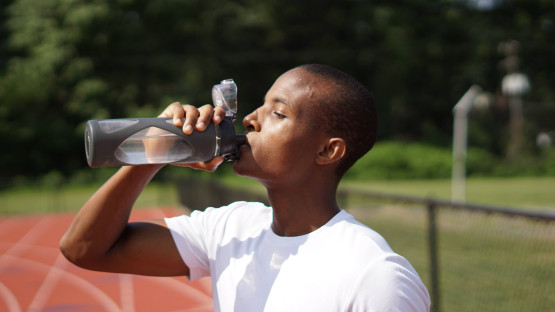“Drink plenty of water” is a common mantra for achieving good health, more energy, clear skin and weight loss. Often the recommendation is 2 litres (L) per day, such as in the Eatwell Guide of the United Kingdom’s National Health Service (NHS), but it can be much higher too. The United States National Academies, for example, recommends women drink up to 2.7 L and men 3.7 L every day. Many of these recommendations are based on epidemiological studies, experiments on dozens of people, or subjective methods such as questionnaires.
However, a new study by an international team of researchers published in Science, exploring water turnover using data gathered through the nuclear technique of doubly labelled water analysis, is shedding new light on how much water actually needs to be consumed. Water turnover refers to the amount of water used by the body each day. Although closely related, water turnover is not equal to the body’s water requirements, because we also absorb water from the air through our skin and the food we eat.
The study has found that previous guidelines and recommendations may be too high for most people in most situations and a realistic daily figure could be as low as 1.5 L for young men and 1.3 L for young women, and varies with many factors.
“Drinking water is about a half to 40 per cent of water turnover,” said Yosuke Yamada from the National Institute of Biomedical Innovation, Health and Nutrition, Japan, the first author of this new paper. “We consume water content of food, and our body itself produces some water during the energy metabolism process as well,” Yamada added. “If you multiply water turnover by about 0.4, you maybe can get an answer to how much water you need to be drinking in a day, although it is dependent on what you eat.”
Using the IAEA Doubly Labelled Water (DLW) Database, Yamada and over 90 researchers from institutes across the world examined data on body water content and metabolic turnover of 5 604 men and women, aged between eight days and 96 years old, from 23 developing and developed countries.
The researchers used the data to develop a general equation for predicting water turnover that can be used to anticipate the effects of future changes in climate and population demography, for example, and help countries anticipate their future water needs.
“Understanding the factors that drive our water turnover and the relative importance of different factors is a big step forward in our ability to predict future water needs,” said John Speakman, professor at Shenzhen Institute of Advanced Technology and the University of Aberdeen, and one of the paper’s authors.
The study found that there are many predictors associated with water turnover that are beyond age, size and body composition. The athletic status, physical activity level, socioeconomic and environmental factors also determine the water turnover.
“A one size fits all policy for water intake is not supported by these data,” said Alexia Alford, an IAEA nutrition specialist and co-author of the paper. “It is not as simple as saying all people should drink 2 litres of water a day. There are many factors involved, and this recommendation, especially in countries where clean drinking water is expensive to produce, is not justified for health requirements.”
Alford said that the estimation of water turnover using these new equations can not only help to design strategies for drinking adequate water amounts but also design future water needs — something crucial with increasing population and changing climate.
The study relied on data stored in the IAEA DLW database. The database contains data from over 8,300 people, making it by far the world’s largest collection of such data. It has been gathered using stable (non-radioactive) isotopes of hydrogen and oxygen — deuterium and oxygen-18. The database is free and accessible to researchers with clear and defined research questions approved by the database’s management group. While most of the data comes from studies conducted in Western countries, the IAEA is looking to expand the data set further, and this year has begun a coordinated research project to add data from Asia, Africa and Latin America.
It is not as simple as saying all people should drink 2 litres of water a day. There are many factors involved, and this recommendation, especially in countries where clean drinking water is expensive to produce, is not justified for health requirements.






